- Learning time
- 30 minutes
- First play time
- 120 minutes
Murano
Designed by: Inka Brand,Markus Brand
Murano is an island – actually a collection of islands – off the coast of Venice, renowned for its beautiful glassware. In the game, you set about building this industry up from scratch – the islands starts off empty, and over the course of play you populate them with glass factories, palaces and three different types of shops – along with customers to buy from them.
At the start of the game a set of gondolas are placed around the edges of the board, and each player is given a set of gondoliers and a few coins. The gondalas are the central pivot of the game – on every turn, you choose one gondola and move it counter-clockwise. Wherever you stop, you take the associated action on that part of the island.
So what are the actions? Well, some are very simple: pick up some coins or or a building tile, which you can then place on the islands somewhere by subsequently taking the build action. The tiles are made up of the aforementioned buildings, and when they are placed on the islands they score points – you can always place up to three tiles, but buildings must be adjacent to pavements. Pavement tiles are free to place – just take however many you need when you take the build action. The factories, once established on the island, can also make glass if you stop at the appropriate place. But it costs you minus 2 points for every factory you run this way, so why do it at all? Because glass makes you money, and money can be extremely hard to come by in this game. Another way to get money is to have customers visit shops on the islands: no points deduction for this, but it doesn’t tend to give quite the same returns…
A pivotal stop on your journey is picking up character cards: these can provide enormous point swings at the end of the game if you meet the requirements on the card: having more blue shops than red shops on an island, for instance, or an island containing no palaces at all. But for the character card to score anything, you also need to place one of your gondoliers there, and this takes an action too. You can also trade in gondoliers for cash (and vice versa) or hire more gondoliers to do your bidding this way. Finally there are also special building tiles – these are built the same way as the other buildings, but instead of scoring you points they get you a special ability – giving you a distinct advantage for the rest of the game.
It sounds bucolic; simply moving your boat, taking an action, like you’re on a Norfolk canal cruise. But in fact Murano is anything but: because you can only stop at an empty action space, oftentimes the action you want to take is blocked by another boat. You can pay to shift a boat on out of your way – but doing so can get expensive, especially if there are more boats in the way ahead of it – it’ll cost to move them too. So what arises from this moving/stopping of the boats is a game where you might choose to take a less-than-perfect move for yourself, because you can see how it will hurt other players. And there are limited space for gondoliers too – someone may grab ‘your’ spot on an island, and now you have to pay extra to realise the goal on your character card.
The guru's verdict
-
Take That!
Take That!
There's no combat in the game, but there's still a degree of spicy interaction
-
Fidget Factor!
Fidget Factor!
Low to moderate
-
Brain Burn!
Brain Burn!
It's about gearing your game to what your long-term goals are with the immediate options presented to you on the board.
-
Again Again!
Again Again!
There are some random factors to the game, such as the character cards or where the customers pay pop up. But the main variety here is what the players bring and the constant flux of the boats on the board.



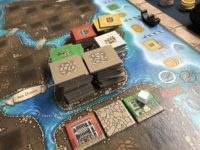

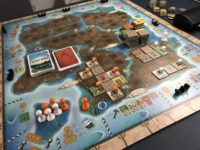
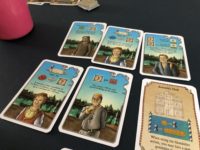



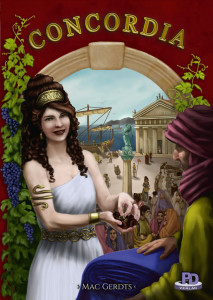
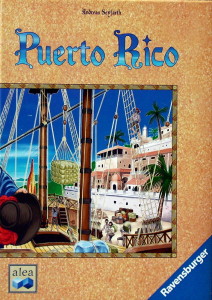

Sam says
The theme might not grab you by the lapels, and the story of constructing an island devoted to glass-blowing feels somewhat secondary to the puzzle the game presents: but it's still a very intriguing puzzle, and a very endearing game - reasonably easy to understand, quick to play, but offering a degree of depth and variability that makes Murano a shrewdly devised design: you can play in an hour or so once you know it, during which the bland-looking board transforms into a teeming city centre, brimming with both customers - and tension.